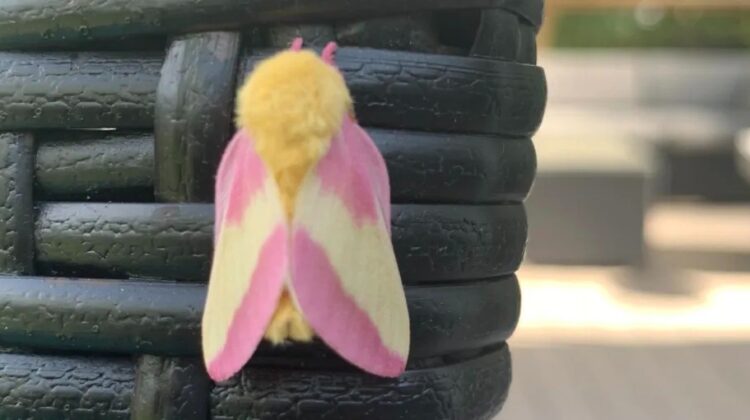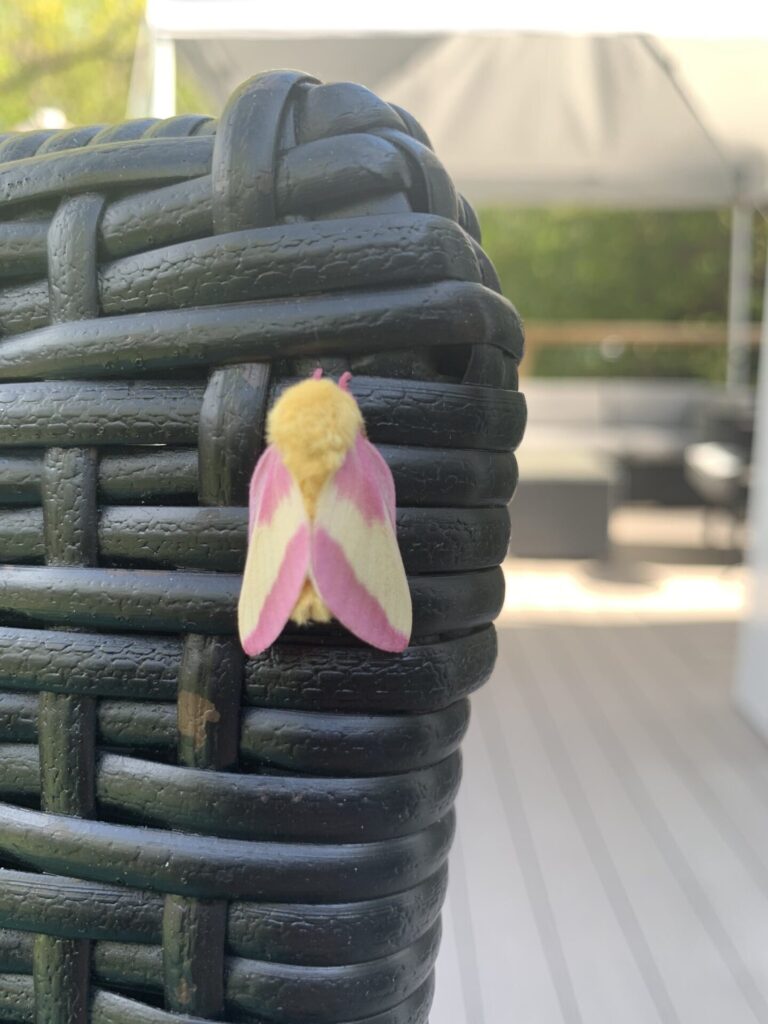
Imagine stepping outside to find a creature you thought only existed in cartoons: a bright, fuzzy, pink and yellow winged thing. Journalist and podcast host Rebecca Lavoie recently discovered not one, but two rosy maple moths on her deck, and the internet can’t believe they’re real.
“This moth exists in nature and it’s ON MY DECK,” Lavoie tweeted. “No that’s arts and crafts,” someone responded, jokingly. “Oh my days it looks like something a child would draw,” another added. “What an absolute strawberry-banana milkshake of a moth.” someone else replied.
Later, a second moth joined Lavoie’s deck. “It’s real! And now he has a friend!” she updated. “I hope they never leave!”
The magical, colorful insect is in fact real. Several other Twitter users even shared their own sightings. “I had one come visit me too, I named him Pink Lemonade,” one person shared. “Then I saw an identical one a few feet away and wondered if they were lovers.”
What is a rosy maple moth, exactly?
According to the University of Michigan’s Museum of Zoology, rosy maple moths, scientifically known as Dryocampa rubicunda, are part of the Saturniidae family, or the great silk moths. Although they’ve been recorded as far north as Ontario, Canada, they primarily hang out along the East Coast, as far south as Florida. (Lavoie’s Twitter profile says she’s from New Hampshire, so her sighting checks out.) The population extends slightly west into Michigan, Indiana, Texas, Kansas, and Nebraska.

Are all rosy maple moths so colorful?
As you might guess, the rosy maple is known for their wooly body and vibrant hue, but according to the University of Virginia’s Mountain Lake Biological Station, their color actually varies. Their bodies range from bright yellow to cream or white, and although their wings are typically pink, some are rosier than others. In fact, a subspecies called Alba exists only in Missouri, and they’re either all white or white with pink spots.
The University of Michigan reports that the moths are mainly nocturnal and solitary, except when they mate, during which adults emerge in the late morning and early afternoon, which could explain why Lavoie saw two when she did.
Fun fact: Adult rosy maples don’t eat! Therefore they aren’t a threat to their ecosystem as predators, and they won’t chomp away at your landscaping. So if you happen to see one hanging out in your yard, know it can’t do any harm.

Leave a Reply